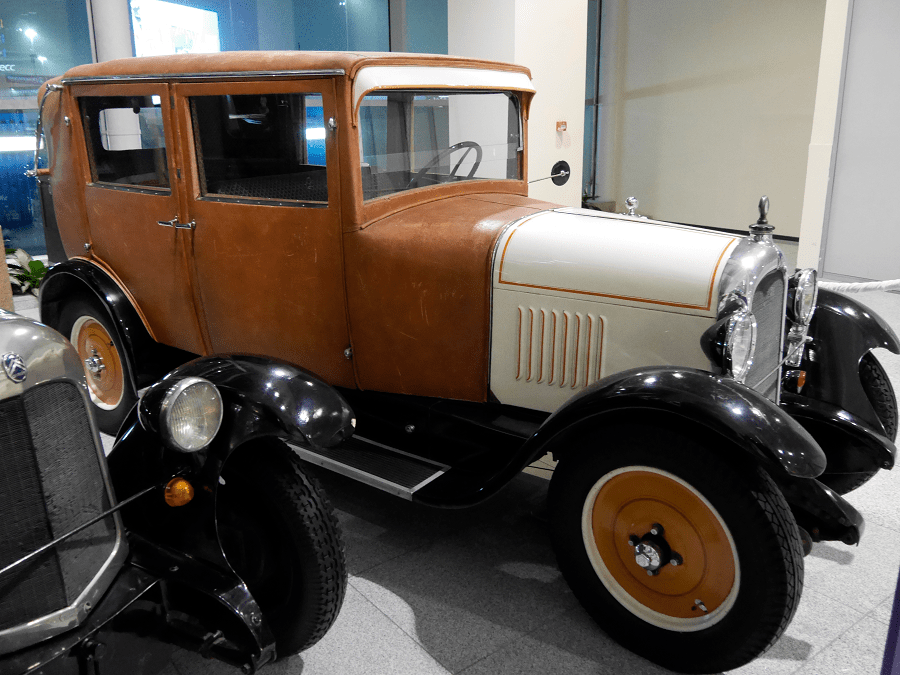Citroën B14. The most comfortable serial car in France in 1928
Weight: 1090 kg
Max. speed: 80 km/h
Engine: 1539 cc
Power: 22 HP
The “All Steel” B14 was presented at the October 1926 Motor Show. It represented a decisive technical advance over the B12.
The chassis is lighter, the engine is more flexible and the foot brake now acts on all four wheels.
In March 1927, the B14 became the B14F with Westinghouse servo-assisted brakes. The top speed reaches 80 kilometers per hour. The range of bodywork is extended since the catalog of the time offers:
- the torpedo (4 open doors with soft top) in standard, luxury and commercial versions,
- interior driving (4 doors, 6 windows and rear trunk) as standard, semi-luxury and luxury,
- the saloon (4 doors, 4 windows and rear trunk) as standard and semi-luxury,
- the family (4 doors, 6 windows and trunk) in luxury,
- the coach (2 doors, 4 seats) in series and luxury,
- the convertible (2 doors, 2, 3 or 4 seats) convertible or not convertible (or fake convertible),
- the city coupe,
- the taxi in sedan, landaulet and sedan landaulet,
- la normande (open utility).
At the 1927 Salon appears the B14G model whose silhouette has been refined. A station wagon completes the range.
The technical characteristics:
- Inline-4, 1539cc engine with 70×100mm bore – stroke giving 22 real horsepower at 2300 rpm.
- The valves are lateral and the water cooling without pump (thermosiphon).
- Fixed advance ignition by magneto or voltex and 6 V-60 Ah battery.
- Solex 26HBFG – 26GHF (B14) or 26BFHG (B14F & B14G) carburettor.
- 3-speed non-synchronised gearbox and mechanically operated drum brakes with servo – B14F & B14G. Maximum speed 80 km/h.
- 13×45 Michelin Supercomfort tyre.
This model met with fairly great success given its competitive price compared to the competition at a price of 22,600 francs for the sedan or the “demi-luxury” sedan.
At the same time, a utility version with a 1,000 kg chassis called B15 will be produced, benefiting from the same improvements as the tourism model.












